 SEP candidate Robert Skelton
SEP candidate Robert SkeltonThe Ardwick ward is an overwhelmingly working class district, southeast of Manchester city centre and has a population of around 15,900. It is where I was born and went to school.
Historically, Ardwick has epitomised the appalling social conditions and brutal struggle for existence forced upon wide layers of the working class.
During the industrial revolution in the 19th century, Ardwick was home to numerous textile mills and factories including brick works, chemical plants, boiler works and a rubber factory.
In his groundbreaking work, The Conditions of the Working Class in England (1844), Frederick Engels pointed out that Ardwick at that time was among the areas in the city in which “the upper bourgeoisie” lived “in remoter villas with gardens”. These parts of Ardwick were substantially more affluent, with the area around Ardwick Green the location of many Georgian and Regency-style homes belonging to cotton magnates and merchants. This wealthy layer lived in proximity to areas of slum housing and generalised poverty.
Much of the poor population lived in Victorian terrace houses that were demolished during the 1950s, 1960s and 1970s, to be replaced by council houses and flats. However, the economic decline of Ardwick since the collapse of the cotton industry has never been arrested.
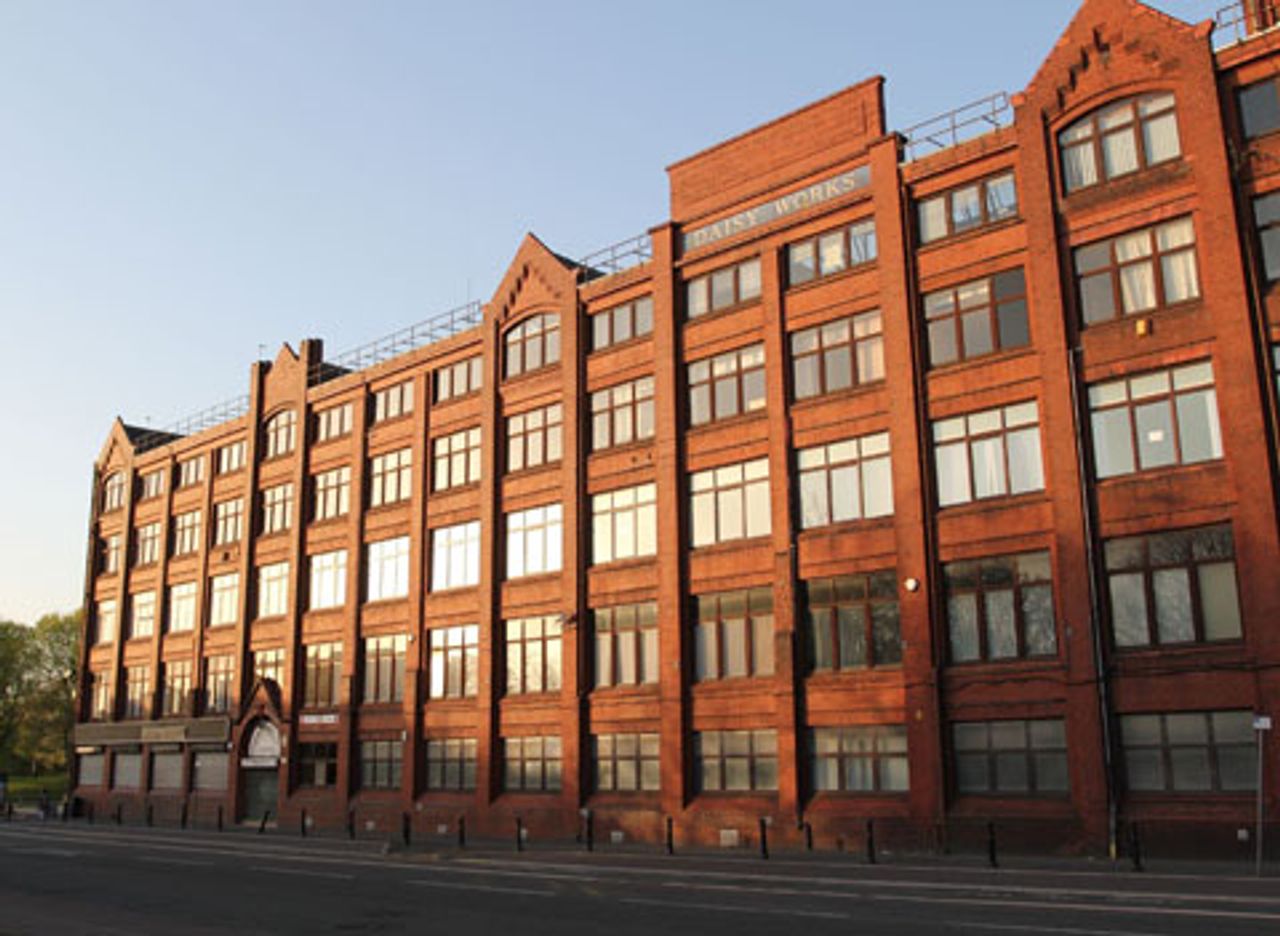 Daisy Works, one of Ardwick’s many former textile mills
Daisy Works, one of Ardwick’s many former textile millsBetween 1975 and 1985, east Manchester saw the loss of almost half its jobs. The few remaining larger non-textile employers in the Ardwick area--such as Great Universal Stores who employed up to 3,000 staff and the IT services firm ICL/Fujitsu--have shut down their operations during the last decade.
Today Ardwick and swathes of Manchester are blighted with entrenched poverty and social inequality. As in Engels’ day, this poverty exists alongside sections of the city noted for their wealth and opulence. Ardwick residents can look out their windows across the small distance that separates them from Manchester city centre and see a skyline of glittering skyscrapers, including the 47-storey, luxury residential Beetham Tower.
The top floor penthouse in that structure is owned by its architect, Ian Simpson, who bought it for £3 million. Other apartments in the city centre, such as Number 1 Deansgate, have sold for as much as £1.5 million each. High-priced stores such as Louis Vuitton and Armani have sprung up, alongside the new salon of fashion hairdresser Nicky Clarke, which charges £500 and upward for its services to a wealthy clientele.
Such levels of inequality are the product of the last two decades in which the Labour Party-run city council has marketed Manchester as the place where global businesses should invest. A 2009 Financial Times “Doing Business” survey of the Manchester region economy reported that, “the city region generates half the north-west’s total gross value added [GVA], a measure of wealth creation, and with a GVA output of an estimated £54bn ($74bn) in 2007 it is the largest city-regional economy outside London”.
MIDAS, Manchester’s inward investment agency, boasts that low salary levels help produce operating cost savings of 30 percent against London and the southeast.
The influx of business investment has only led to an even greater level of social polarisation. The FT report added, “Yet 15 percent of the workforce has no qualifications and unemployment, now more than 6 percent, is rising faster in the north-west than anywhere else in the country”.
According to the 2007 Index of Multiple Deprivation, Manchester is the fourth most deprived local authority in England. The majority of its population live in the 10 percent most deprived wards nationally. In a 2007 study of 56 cities and towns by the Centre for Cities organisation, Manchester rated as the most unequal city in England, even above London. The report measured factors such as levels of income, employment, education, skills and training, health deprivation, disability and crime. It commented, “Less than a mile from Manchester's new Piccadilly Station there are entrenched pockets of worklessness and underperforming housing markets”.
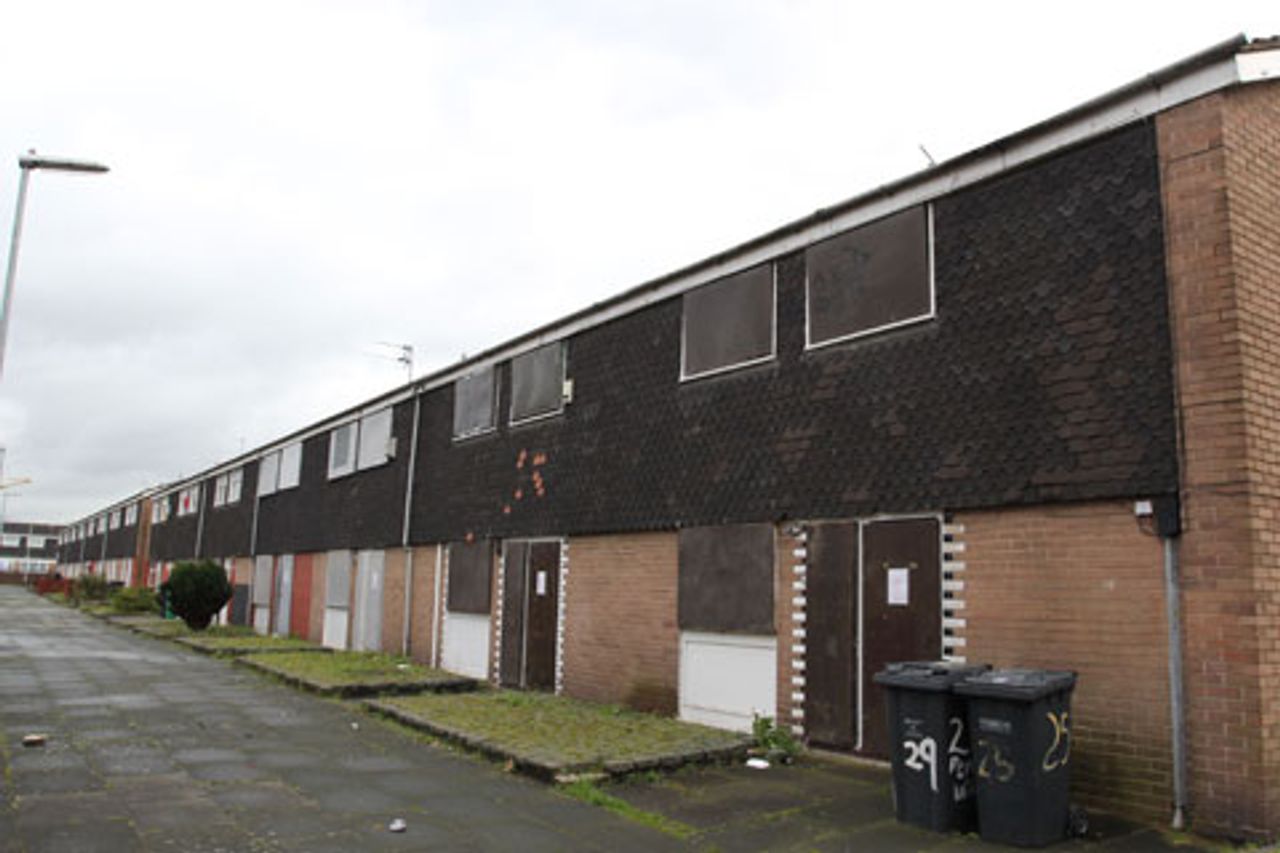 Boarded up social housing in the West Gorton area of Ardwick
Boarded up social housing in the West Gorton area of ArdwickArdwick is in the top one percent of the most deprived areas in England, with high unemployment and child poverty, low educational attainment, poor health and lack of facilities. A council report last year pointed out, “There are very high levels of worklessness with over 2,800 people out of work of which approximately 1,400 are on Incapacity Benefit/Employment Support Allowance”.
The official unemployment rate in Ardwick as of April 2010 was 6.9 percent and 10.1 percent among males. However, the proportion of those “economically active” who are unemployed is 16.5 percent. Fully 13.3 percent are in receipt of Income Support.
Many others work in low-paid minimum wage jobs and some earn less than this minimum. In 2009, a BBC investigation found that a knitwear factory in Ardwick was paying some workers £3 to £3.50 an hour for 12-hour shifts.
Official figures reveal staggering levels of child poverty. The 2007 Department for Communities and Local Government's Indices of Deprivation Affecting Children found 27 of Manchester’s 33 wards among the most deprived 10 percent of wards nationally. Twenty wards surveyed in the Greater Manchester region had child poverty levels of 79 percent or worse. The four wards in Manchester with the highest level of child poverty were Bradford (99 percent), Harpurhey (99 percent), Hulme (99 percent) and Ardwick (98 percent).
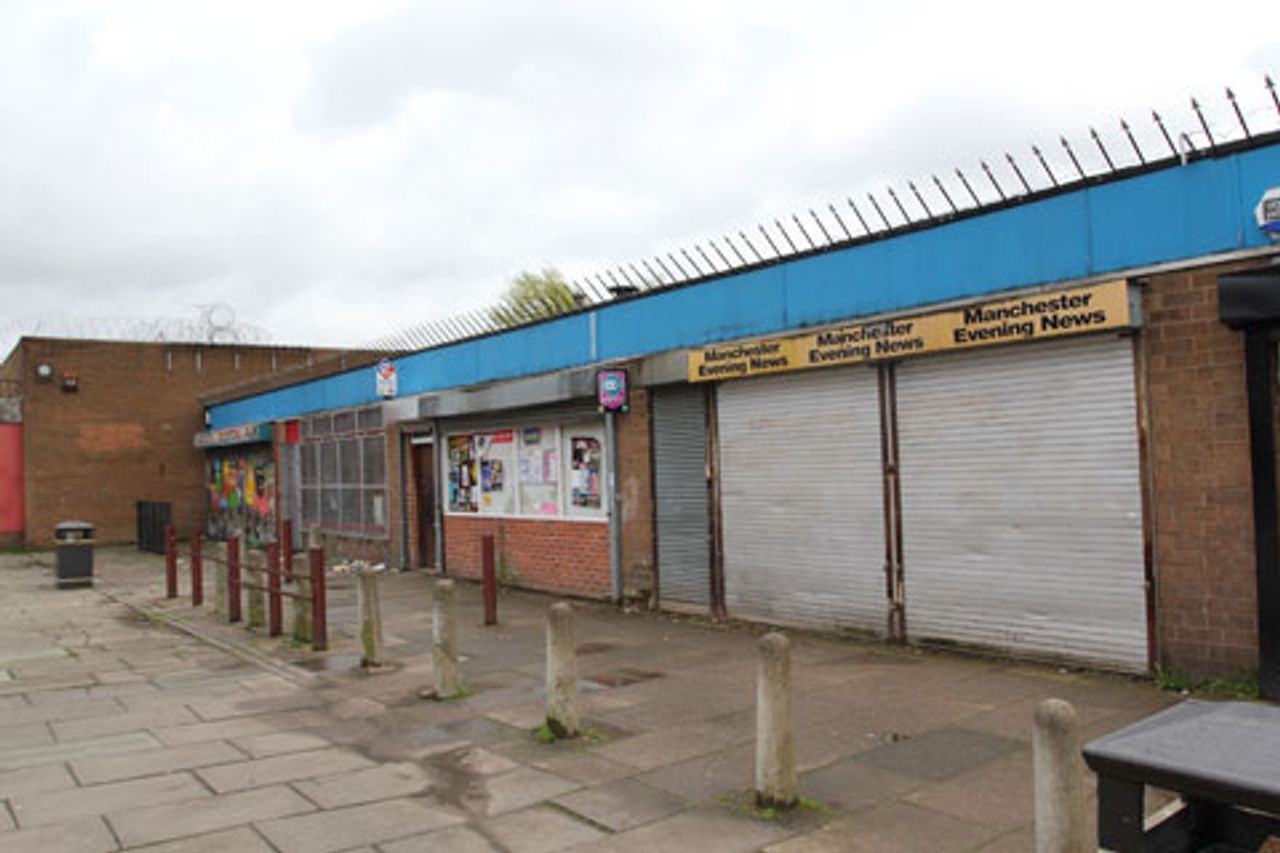 Closed down shops in West Gorton, Ardwick
Closed down shops in West Gorton, Ardwick
In March 2009, of the 6,665 occupied properties in Ardwick, 2,627 households (39.4 percent) were claiming Council Tax benefit and 2,839 households (42.6 percent) were claiming Housing Benefit. The number of Ardwick primary school children in receipt of free school meals in 2010 stood at 50 percent. The number of secondary school children in receipt of free school meals was worse still, standing at 51.8 percent.
Educational attainment is very low. Just 18.8 percent achieved 5 A-C grades (including Maths and English) in 2009. This compared with an already low rate of 23.9 percent in Manchester and 49.8 percent in England.
The product of such social misery on general health and life expectancy is palpable. In a Residents’ Survey from 2007, 25 percent of people in Ardwick reported they were “Not in good health”.
Life expectancy in Ardwick (73.2 years) is lower than in England (79.9 years) and Manchester (76.2 years) as a whole.
Due to the collapse of manufacturing in Britain, many of the most populated urban areas, including Manchester, rely disproportionately on public sector employment.
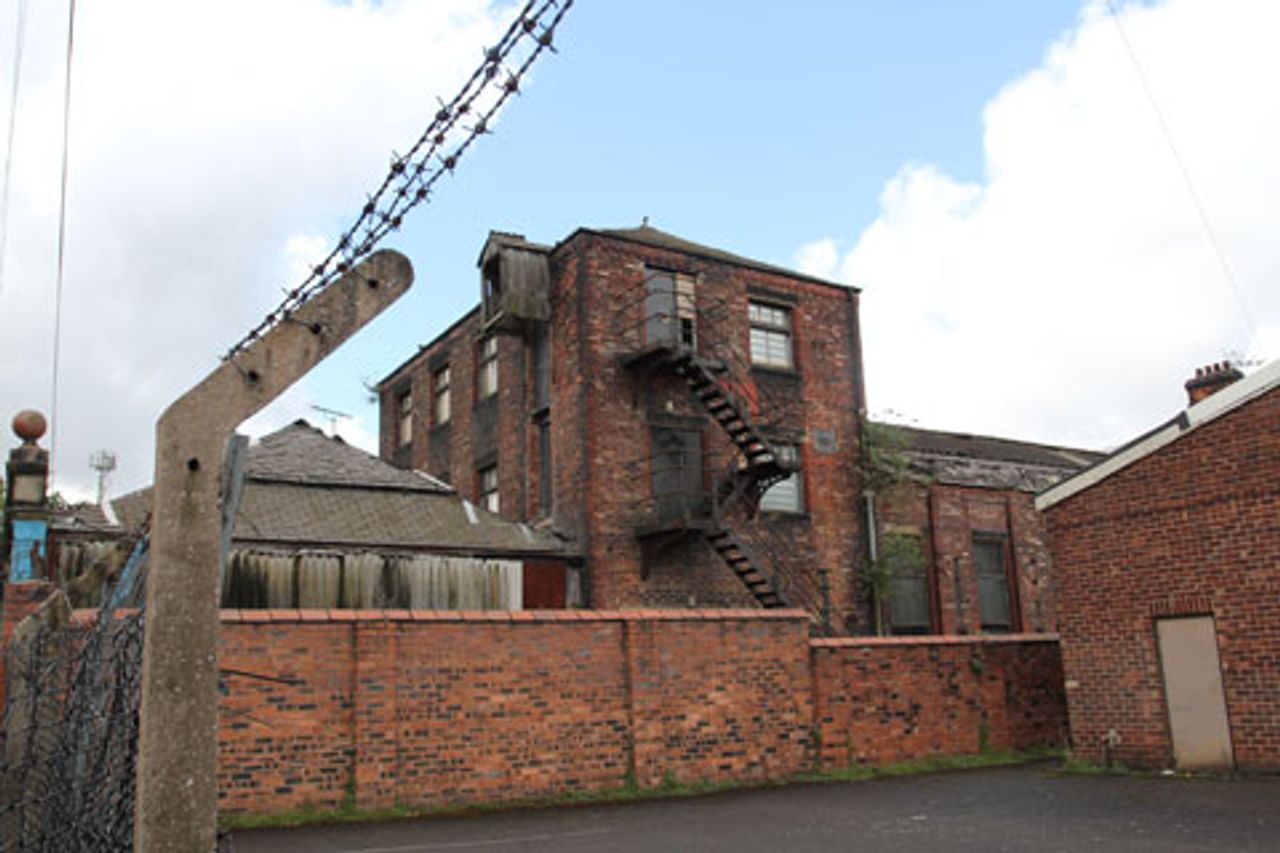 Derelict factory buildings in Ardwick
Derelict factory buildings in ArdwickThe reliance on public sector employment in Ardwick is enormous, with more than 50 percent of those working employed in health, social work or education. Many employed in Ardwick work as hourly paid staff at the large Central Manchester Hospitals complex located in the ward and employing 8,000 people. The two main universities in the city, employing more than 15,000 people, are also in the area and are large employers of Ardwick residents.
Many of these jobs in health and education are set to be lost as a result of the Conservative/Liberal-Democrat government’s spending cuts. Central Manchester Hospitals is slashing spending by £30 million a year. It is estimated that up to 1,400 jobs could be lost over the next four years.
Manchester City Council, long controlled by the Labour Party, is imposing £109 million in cuts this year, rising to £170 million in 2012-13. Ardwick is represented on the city council by three councillors, all Labour, including Bernard Priest who is Manchester City Council’s Executive Member for Finance and Human Resources. Due to the widespread anger generated by the cuts, Priest had to set out the council’s budget at Manchester Town Hall to heckling from the public gallery, with police on standby.
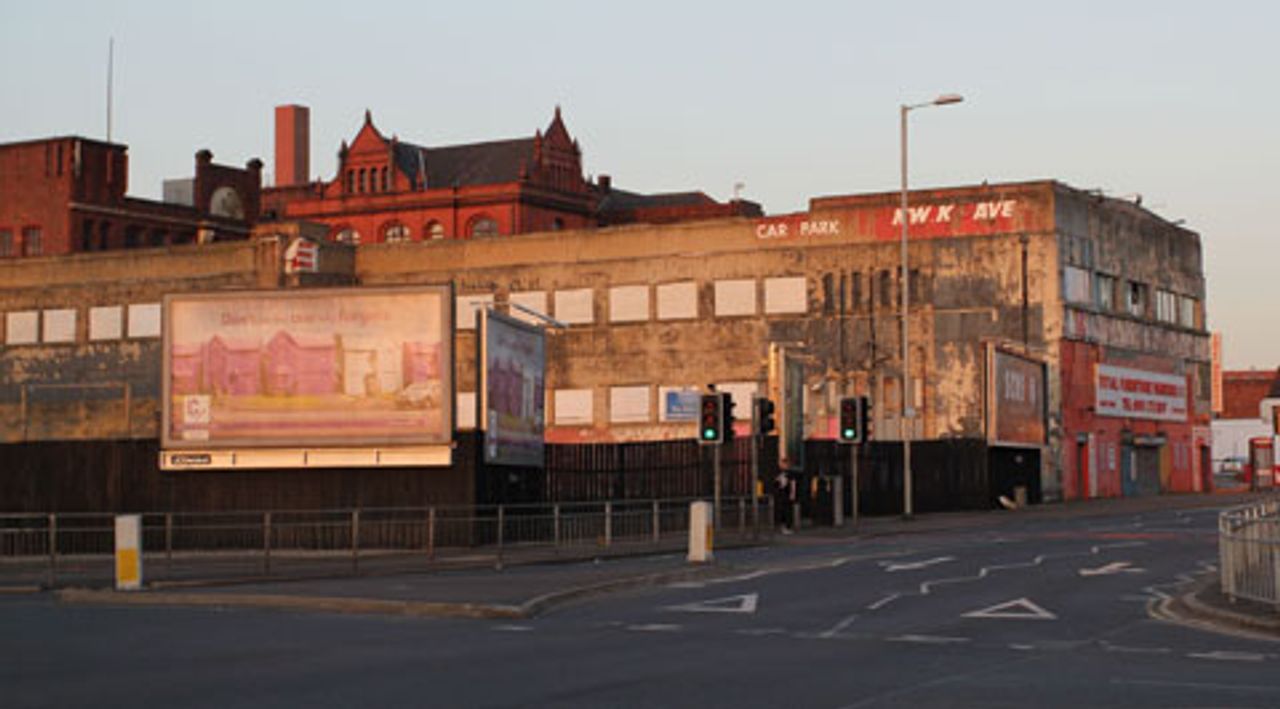 A former supermarket, now a derelict building
A former supermarket, now a derelict buildingArdwick has few basic social facilities, with no library, swimming pool, job centre or even access to a local supermarket. The cuts imposed by the council will wreck what remains of social services in the area, with children’s and young people’s services badly hit. Ardwick’s Sure Start children’s facilities are all threatened due to the council’s cuts. This includes a new Sure Start Children's Centre based in an integrated building with Medlock Primary School that provides facilities for 40 children aged six months to five years in the day nursery.
Other Sure Start facilities threatened in the ward are the Bushmoor Children and Family Centre, those run from Brunswick Church and the Daisy Bank Children's Centre.
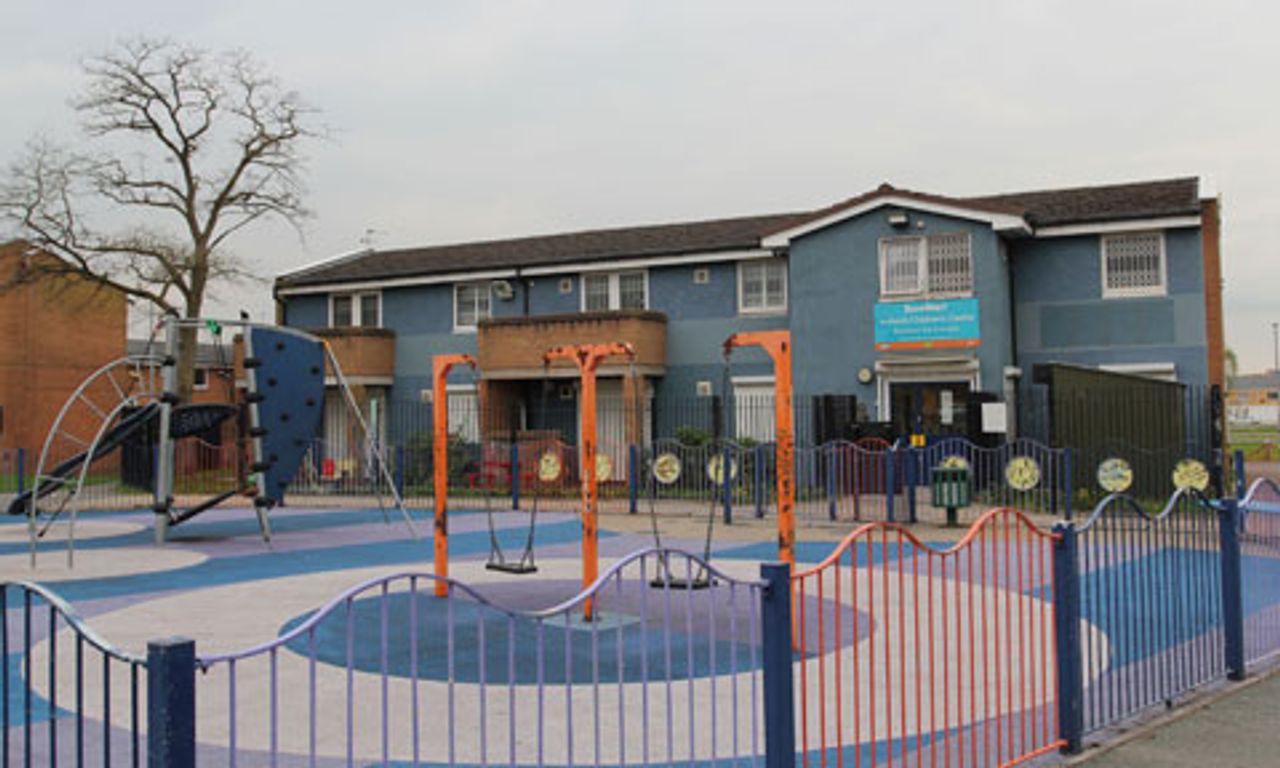 The Bushmoor Sure Start centre in Ardwick
The Bushmoor Sure Start centre in ArdwickThe popular Ardwick Leisure Centre on Stockport Road is scheduled to close. Used seven days a week by the local community, it offers a wide range of activities, including badminton, basketball, five-a-side football, netball and volleyball. The Ardwick A6 Young People's Centre at Wilson Street is also threatened with closure due to a cut of more than a quarter of the budget of the Manchester Young Lives charity that runs the service.
Fill out the form to be contacted by someone from the WSWS in your area about getting involved.
